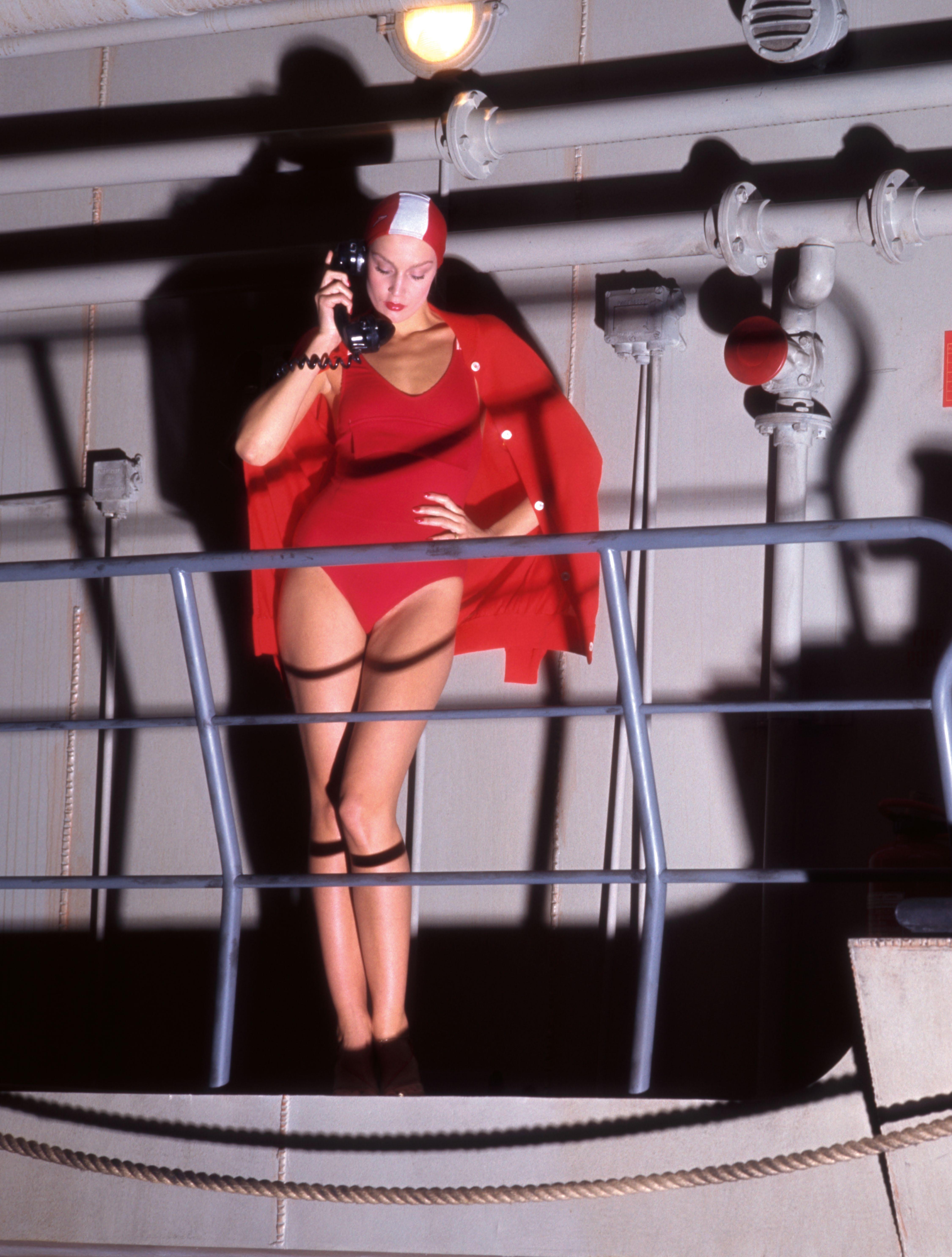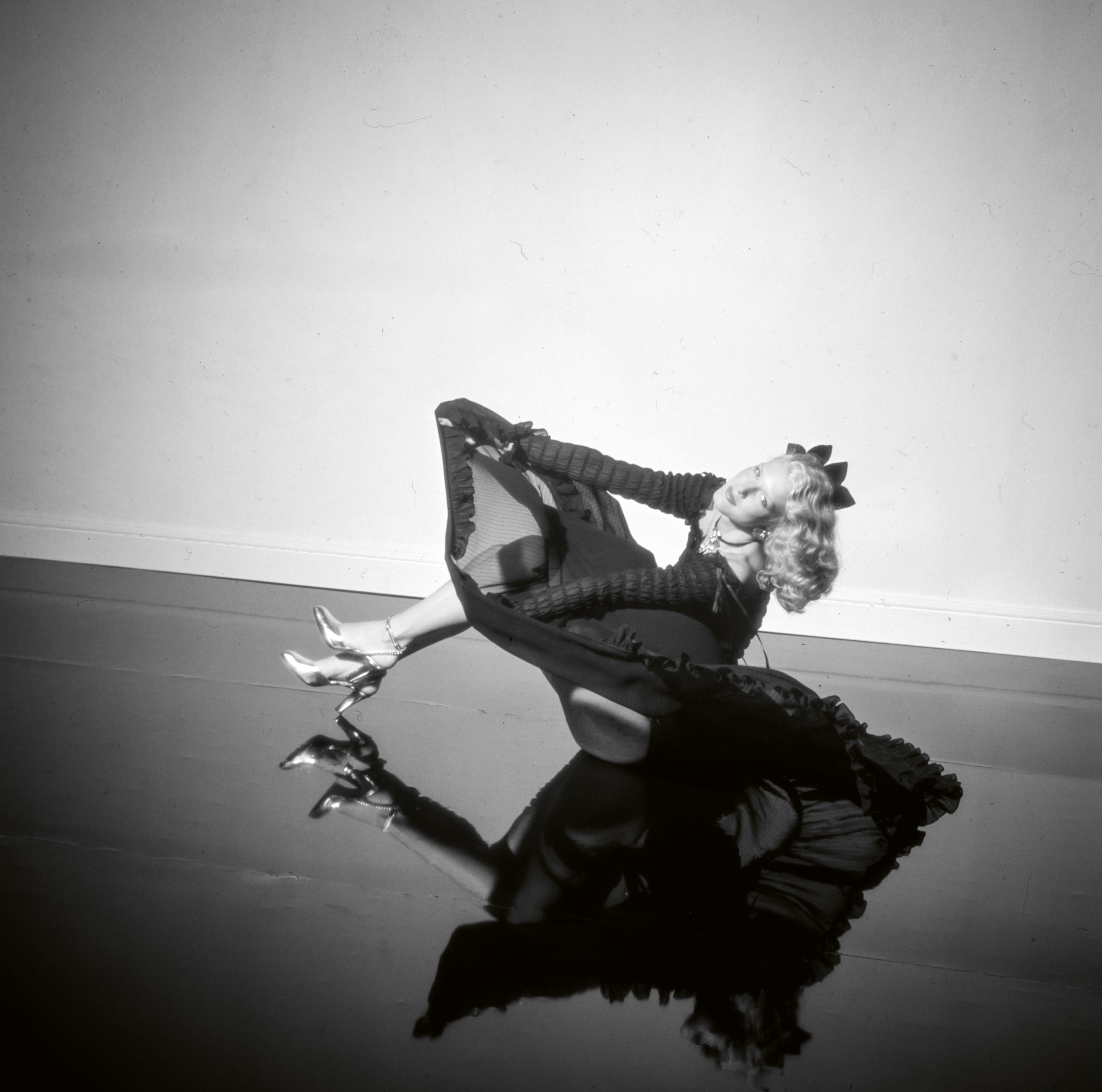
It feels really weird to be writing this introduction. For you may not realise it, but Willie Christie and I were once married ... just around the time his career as a photographer took off.
I first met Willie when I was working as a fashion editor and he was assistant to Clive Arrowsmith and dating my new assistant Patricia McRoberts – they were a cool couple. Clive was the most sought-after fashion photographer at that time.
I have to say, in the beginning we didn’t really hit it off, particularly on an ill-fated trip to America with Clive for British Vogue . The year was 1970, British Vogue was never fortunate enough to be given the huge budgets of American Vogue , and so we arrived in New York with a suitcase full of cameras, a trunk full of clothes, and a vague itinerary that took us up and down the East Coast of America: Clive and Willie, myself and the model Ann Schauffuss. Unfortunately, we had only been allotted two rooms in the hotel, one for the boys and one for the girls ... which did not go down too well with Clive as he had intended spending this time together with his then girlfriend Annie. This left me and Willie in the other room, which was kind of awkward, I remember, as we were barely talking. But, I have to say, he was the perfect gentleman and who was I to make a fuss?
We spent the next two weeks trying to avoid each other and taking turns getting dressed and undressed in the bathroom. Fast forward to 1972: Patricia and Willie had split up and she had married someone else. Willie had left Clive and was just starting out on his own.
One day I was given two tickets to a charity ball. I didn’t have a boyfriend at the time, so Patricia, who was no longer my assistant but remained my close friend, suggested I take her ex, since he was the only person we knew who had his own tuxedo.
It was a wonderful evening and after a trip on the back of his Harley-Davidson to Devon a few weeks later
(without a helmet between us) I moved in with him! Three years later we were married. In between, he was slowly creating his own buzz as a fashion photographer. On the one hand, he was very, very modern, and on the other really nostalgic. He loved the shapes and shadows on Horst photographs, the reality and artifice of old Hollywood movies and the artistry and intrigue of Guy Bourdin, who especially inspired him. But then he had this other side that was very rock and roll. He played the guitar with a bunch of his friends late into the night, driving our neighbours mad, but you can’t be angry with Willie for long. He possessed a charming way of making you smile and forgive, and the neighbours forgave him over and over again.
As Willie was growing as a photographer and becoming more and more in demand, Terry Jones, Vogue ’s then art director, suggested we work together. This really excited me, as I loved working with new young photographers and obviously Willie was top of my list. We created this glamorous 1940s nightclub scene starring the model Marie Helvin as our singer, wearing a collection of beautiful evening gowns.
Willie was an immediate success at Vogue . Everyone loved working with him, particularly Liz Tilberis. Together, they developed a hugely popular section of the magazine called ‘More Dash Than Cash’.
Meanwhile we worked on extensive lead stories and trips and lots of covers. He was as excellent in the studio as on location, which rarely happens. He also had many friends in the music business, who offered him a different take on photography by giving him the opportunity to try his hand at short films and videos.
His first venture was to make a three-minute film of ‘Shine on You Crazy Diamond’ for Pink Floyd. It was screened in 1977 during the Animals tour and Willie and I flew to Paris for the show. His film was projected on a mammoth circular screen suspended behind the band.
“Willie was an immediate success at Vogue. Everyone loved working with him, particularly Liz Tilberis.”
As we sat in the mixing box, it was extraordinary to hear 15,000 people roar their approval at the film’s climax. In 1984, Willie shot the stills for The Final Cut , Pink Floyd’s last album with Roger [Waters] – the group’s only cover art to be shot by anyone other than the dynamic collective, Hipgnosis.
Roger was so happy that he commissioned Willie to shoot a 20-minute modular video using four to five tracks that fitted together as a story but also worked individually. The first cut was shown to Roger with various musicians and technicians in attendance at Olympic Studios in Barnes. Unfortunately, it didn’t gain Roger’s 100% approval, causing the temperature to rise in the studio. But after some further editing, all was well and it went to number one in the video charts. One of the tracks, ‘Not Now John’, aired on The Old Grey Whistle Test . Sadly, the end had to be edited out due to Roger’s constant swearing on the track, which killed the visual build-up. For another of the tracks, Willie had gathered and edited together old newsreel. I’m proud to say that I had about a four-second appearance in some archival footage from my modelling days in the 1960s.
In 1982, Willie made his first cinema commercial for an existing stills client of his, Medway shoes. It ran in London cinemas for several weeks. Three years later, he joined the production company run by Tony Scott’s old producer, Mike Picknell. He sold his studio in Ladbroke Grove and for the next few years concentrated solely on making commercials, during which time, he made over 60.
In 1996, he formed Christie Hart films (with producer Carrie Hart) and they began working on ‘A Little Joke’, a story by Anton Chekhov. Willie adapted the screenplay and funded, co-produced and directed the film, which starred Michael Gough, Jamie Glover, and an unknown 14-year-old actress, Emma Pierson. The film was renamed The Whisper , made the shortlist at the BAFTA Short Film Festival and was highly
considered at festivals worldwide. Willie refers to it now as the film world’s most expensive calling card.
The year 1999 saw Willie directing a limited run of the play Siren by Australian author David Williamson. It played at London’s Grace Theatre. After that, his time was mostly taken up writing screenplays, which proved discouraging – Hollywood is not for the faint of heart. (But no faint heart he, he continues to write.) This period of his life he calls his ‘wilderness years’. It drove him to consider destroying all his negatives, as he felt they dragged him down. Fortunately, his brother-inlaw stopped him from this desperate act, giving him a scanner instead.
As Willie began the process of scanning, he realised what an incredible record he had, both of his own work and of fashion of that time, and that, somehow, there was a theme that ran throughout. It changed his life and lifted his spirits. By 2010, Willie had already had his first exhibition at a private view in London, and made a number of limited-edition prints. Press attention followed, leading to several more exhibitions, which received equally impressive notices.
All this led him to realise there was a book crying out to be made, so he harnessed the help of Robin Muir, Michael Trow and Harriet Wilson to edit and advise.
Anna Harvey introduced him to art director Timothy Rennie, who immediately came on board to design. And here, a few years later, it is!
Having the opportunity to be creative again has encouraged Willie to go back to his camera. Newly invigorated, he has begun to take photographs once more, which was always his first love – I can vouch for that.

 Jerry Hall on the set of The Spy Who Loved Me, British Vogue, 1977.
Jerry Hall on the set of The Spy Who Loved Me, British Vogue, 1977.
 Carrie Nygren, British Vogue, 1974. Opposite: Encens Paris, 2022.
Carrie Nygren, British Vogue, 1974. Opposite: Encens Paris, 2022.

FIRST VOGUE SHOOT
Marie Helvin channels old Hollywood glamour, British Vogue, 1974. Styled by Grace Coddington.
Grace and I had been living and working together on personal shoots for ourselves. Grace was at the peak of her beauty and was magical in front of the camera. I had been working and living with the best in every way. I had been building my reputation with other magazines and papers, and then I heard from Grace that Terry Jones, Vogue’s then art director, had asked her if they should give me a chance, and better still, David Bailey had championed me with Beatrix Miller. Bless him. Grace had these clothes in mind and, ever the budding Hollywood film director, I wanted the whole nightclub scene. Grace whittled me down to this simplified version. The piano player was Alex from the Ginger Group, who was hairdresser on the shoot. He fitted nicely into my white Saint Laurent suit. Why I had this suit I have no idea –I probably wore it once …
We shot it in Studio 2 at Vogue studios in London. Christopher Drake, then a Vogue studio assistant, built the set and we became close friends and ended up working together for many years after. When I moved into my studio in 1977, Chris came with me. He was by then shooting for House & Garden. If I wasn’t shooting, he was probably building some incredible room set for them.
I shot this on 5×4 plate camera. Getting ready for the first set-up, Bailey appeared holding a bottle of Champagne. He was seeing Marie at that time and had in fact begun their affair at our house. But that’s another story. ‘Am I making you nervous, Will?’ he asked. I should have been, but his generosity of spirit and that great wheezy chuckle split the atom and on we went, and here we are 50 years later.


 This page and opposite: Carrie Nygren, British Vogue, 1977.
This page and opposite: Carrie Nygren, British Vogue, 1977.



 Carrie Nygren, British Vogue, 1977.
Opposite: Clare Beresford, Sierra Leone, British Vogue, 1977.
Carrie Nygren, British Vogue, 1977.
Opposite: Clare Beresford, Sierra Leone, British Vogue, 1977.













MEDWAY
New York, 1978.
I had been shooting a Vogue promotion with fashion editor Melanie Miller for Régine on Bond Street (run by Roberto Devorik). When we had finished, my girlfriend Shirley-Ann arrived to spend a few days with me in New York. I used her for most of my Medway Shoe shoots. This we shot on Park Avenue very early before the traffic had arrived, using the limo we had used on the Régine shoot.



